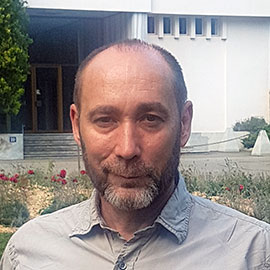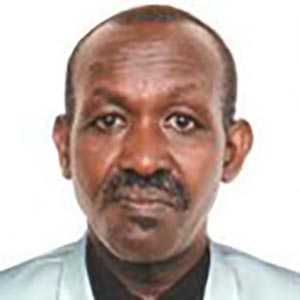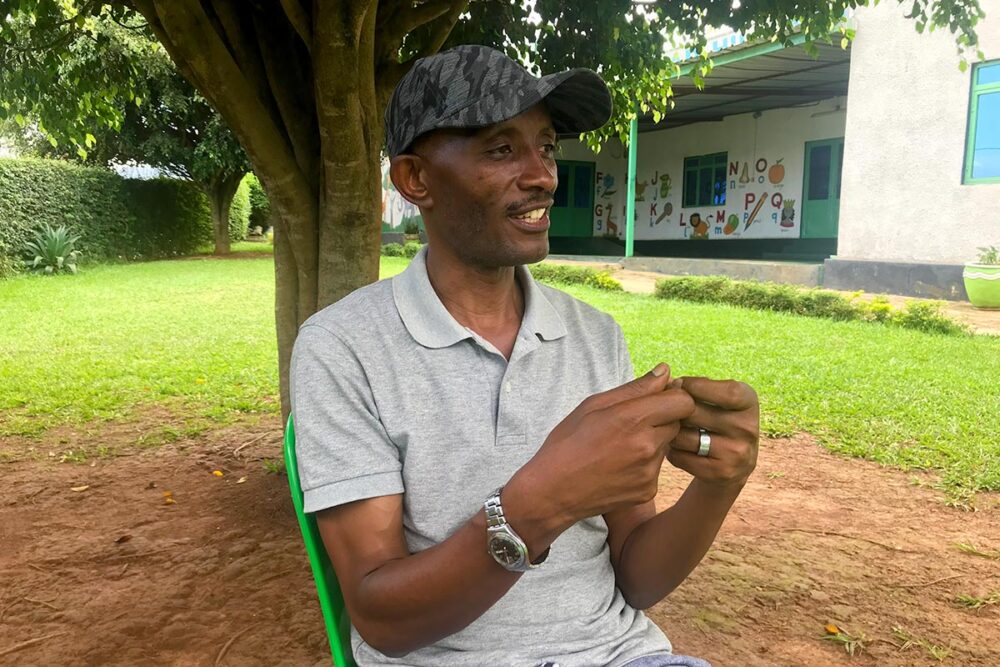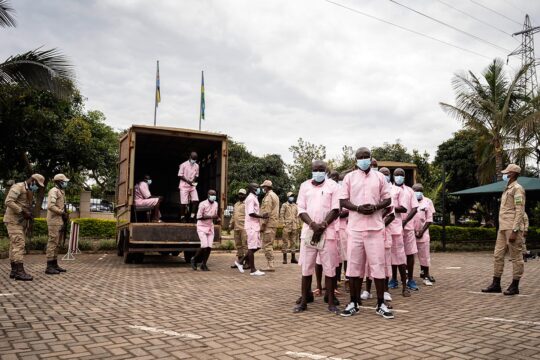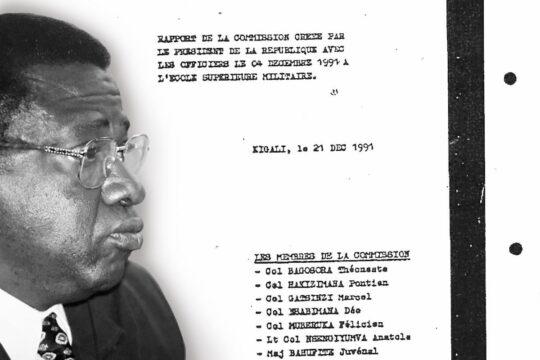JUSTICE INFO: After the genocide of the Tutsis, Rwandans assessed the whole justice effort in a variety of ways, in which the gacaca courts were central. With hindsight and the benefit of time, what’s your judgement on their achievements?
DENIS BIKESHA: Gacaca courts were established for a given reason, so when you want to analyse them, you need to ask yourself whether that given objective was reached. Gacaca courts were not the first justice system used after the genocide: at first, there was the UN International Criminal Tribunal for Rwanda, and the ordinary courts in Rwanda. The main reason why gacaca courts were established was to speed up the trial of genocide cases. Did they achieve that? The second reason was to reveal the truth about the genocide. Did they reveal some truths? The third reason was to uproot the gap of impunity: have these courts managed to punish the wrongdoers and contribute to unity and reconciliation?
You don’t get immediate statistics. It’s not easy to say that one or two million people have reconciled. Reconciliation is a gradual process. But it’s easy to say that gacaca courts tried 1,958,634 cases. We can say we had pending cases and Rwanda tried them. Therefore you can say that gacaca is a success story.
Immediately after the genocide, we had cases of insecurity, witnesses were even getting killed. Today, out of almost two million cases, we don’t even have 25,000 people in prison. So where are the other convicts? They are free in the society. Are they dangerous? No. So when I say it’s a success story, I’m breeding on these tangible examples. If there were no gacaca courts, would have there been a forum where people would have met and discussed genocide issues?
How did it not meet the expectations you may have had?
There is one legal situation that is challenging: compensation. Compensation for the lives of those who were killed is a right. That has not been resolved. One challenge is that it’s a lot of money and you may not know who the provider of the compensation is, even though the principle of “continuité de l’Etat” [the state takes responsibility for crimes committed in its name] exists. And how do you quantify the lost life of someone? This has not been tackled yet. But there has to be some compensation when there is loss of life.
Another issue lies with the archives. They date from 2002, and we are in 2024. These archives should be made use of, they should help in the research and sharing of information. But up to now, they are not accessible. I understand they have been digitized, and that there is some classified information that cannot be accessed by anyone. But apart from rape cases, gacaca courts were operating in the open.
As a state, you have invested money in the gacaca courts, you have made the whole country work, so why don’t you try and also help in archiving and say: now everything is in order. We have been helped by Aegis Trust [an international NGO] to digitize it. That’s very good: the material used during gacaca – paper – would have not lasted long, and we had 169,442 judges sitting at the same time… But it’s a shame to have all these archives and not provide all the means to access them.
The experiment of gacaca courts in Rwanda was the only mass justice effort after mass crime. Would you recommend this approach to other countries?
You cannot transplant the gacaca court system – Rwanda has its uniqueness, the genocide of the Tutsis also has its unique elements – but you can pick ideas that could help you. You cannot use gacaca courts where crimes are committed in concealment. Most of crimes committed in Rwanda were committed in daylight. But elsewhere, you may have people who were hiding or wearing masks or coming at night. This is not what happened in Rwanda. Some people say that when it was turning a bit dark they would stop [the killings]. Some people were even showing off about what they had done. That helped gacaca courts because the information was known by many. Even though some would withhold the information, at least one would end up disclosing it.
In the very early stages of the gacaca process, when they were trying to convince as many prisoners as possible to confess their crimes, the concern was that if you go after too many perpetrators, it would divide and destroy the social fabric. How did it not?
That’s why we reversed the law and said convicts would begin with travaux d’intérêt general [public interest works, known as TIGE], instead of prison. And if you finished your TIGE successfully, you didn’t go back to prison. That helped.
The truth was also carried by many people, to the extent that you couldn’t ignore who to blame and who not to blame. At the beginning, we had cases of insecurity, of course. I remember a Hutu woman married to a Tutsi who was killed by her brothers. In the aftermath of the genocide, she was caught in between. She was blamed by the surviving family of her husband because her brothers had killed him; and she was blamed by her family because she told the truth. Almost every evening, her house was being stoned. So we recommended her to be moved to a different location.
At a certain stage, people understood that living together was compulsory. They could not avoid it. We mobilized. We held public rallies where we stressed why living together was very important. This is what I like with Rwandans: they ask you questions, you sweat, you answer, they ask another one, and at the end of the day when people say ‘ok’, they support it.
You say reconciliation is a gradual process. Did you identify its stages?
In the immediate aftermath of the genocide, there were people looking at themselves in blocks. There were those harmed and there were the killers, which means that before gacaca clarified the situation, every Hutu was seen as a killer. We would not even buy water from the other block. Now we no longer know who is selling: I give you money, you give me food.
The second stage was to create a level of security that led to peace, a state where nothing can come from my neighbor that would be detrimental to my life.
Where it is tricky – and we haven’t reached that stage of course – is to have everyone friendly with each other. You may find a situation where people are not trusting each other very much. That has remained, but it is not among the youth. Young people are trusting each other all the way. They can make friends with whomever. I’d love to see old people also making friends with whomever they want. There are people who do not support intermarriages for example. But the youth do.
It is now a new generation in charge of keeping the memory of the genocide. Does that change the work of memory?
They cannot hide away from it. It’s transgenerational. Even they can be traumatized. It’s part and parcel of them.

